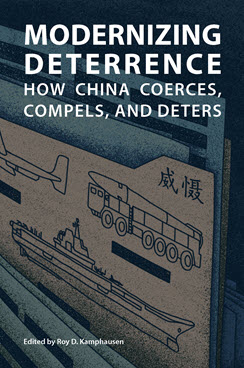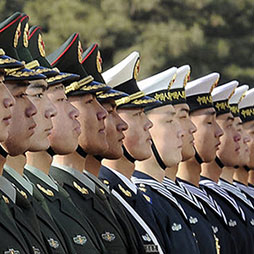China’s Approach to Conventional Deterrence
This chapter argues that the People’s Republic of China (PRC) poses unique conventional deterrence challenges through its unparalleled buildout of cutting-edge missiles combined with its opacity and dismissal of restraints.
EXECUTIVE SUMMARY
MAIN ARGUMENT
Under Xi Jinping, the PRC is increasingly achieving potent, tailored conventional capabilities that could be employed at every level of the escalation ladder. Beijing’s increasing risk tolerance and assertiveness, particularly vis-à-vis disputed sovereignty claims such as Taiwan—together with its meteoric development of military capabilities to support such a posture— require a comprehensive re-evaluation of deterrence in PRC strategic thinking. China’s approach to “integrated strategic deterrence” historically has been broad, encompassing both nuclear and conventional deterrence across competition, crisis, and conflict. The conventional component is in some ways the most important, yet the least studied by Western observers. A panoply of elements, systems, capabilities, and missions are intertwined with Chinese approaches to conventional deterrence. Likewise, since their formal elevation in strategic importance in the early 1990s, conventional missiles have had a leading position in the modernization of the People’s Liberation Army (PLA). China’s rapid military buildup, centered on conventional missile systems, gives achieving an updated understanding of Beijing’s conventional deterrence calculus unprecedented importance. Such understanding is complicated by China’s deliberate opacity and unwillingness to be forthcoming or embrace meaningful guardrails in either public announcements or private engagement.
POLICY IMPLICATIONS
- PLA source suggestions of China possessing conventional intercontinental ballistic missiles in the future, including those outfitted with hypersonic glide vehicles, raise the possibility of serious, unintended escalation.
- Long-held overconfidence in “calibrated deterrence”—and the signaling that it implies—is the most dangerous element of Chinese thinking with regard to deterrence and warfighting.
- U.S. decision-makers must unambiguously uphold the credibility of U.S. conventional and nuclear deterrence, including extended deterrence to protect allies from PRC nuclear and conventional threats.
Andrew S. Erickson is a Professor of Strategy and the Research Director of the China Maritime Studies Institute at the U.S. Naval War College. He is also a Visiting Professor at Harvard University’s Department of Government and an Associate in Research at Harvard’s Fairbank Center.
The views expressed in this chapter are those of the author alone.



